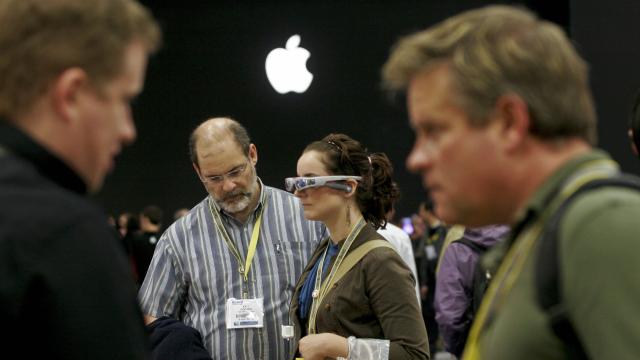Apple’s long-awaited augmented/virtual reality headset won’t arrive until the end of this year at the earliest, but hints at the operating system it will run on have already been uncovered.
Software developers have unearthed references to “realityOS” in App Store upload logs and GitHub repositories used by Apple. These sightings were posted to Twitter by developers Rens Verhoeven and Steve Troughton-Smith.
Uh what is Apple’s RealityOS doing in the App Store upload logs?
AR/VR confirmed? pic.twitter.com/Wp7XWieeEU
— Rens Verhoeven (@renssies) January 17, 2022
In the above tweet are references to a “com.apple.platform.realityos” within the same block of code as an existing platform “com.apple.platform.watchos.”
Nicolás Álvarez tweeted a Github repository with similar references which developer Steve Troughton-Smith says confirms that it “has its own OS & binaries… and has a realityOS simulator.” We should proceed with caution here because Troughton-Smith warns that this could be the “remnant of somebody’s pull request from a fake account.”
“#if TARGET_FEATURE_REALITYOS”
Well then. This at least confirms it 1) has its own OS & binaries, and 2) has a realityOS Simulator https://t.co/6a25kWshXR pic.twitter.com/RyF5O5gFjg
— Steve Troughton-Smith (@stroughtonsmith) February 9, 2022
Then again, archives show the last commit was made this week, and Troughton-Smith goes on to say that this evidence indicates that Apple could reveal the platform later this year so developers can get a jumpstart on creating and optimising apps.
“My understanding of this realityOS reference in dyld is that it is real, and that Apple force-pushed a commit to remove it and hide it before anybody noticed. The internet, of course, never misses a trick,” he tweeted.
This isn’t the first time we’ve heard references to a “realityOS” platform. Bloomberg reported on what was then called “rOS” for “reality operating system” way back in 2017. It will reportedly be based on iOS and run on Apple’s forthcoming AR headset, which Bloomberg says could be at risk of being delayed until 2023 due to various development challenges related to overheating and camera tech.
Apple has kept specifics about its rumoured headset rather well hidden. From what we’ve gathered, the headset will blend virtual and augmented reality and could have M1 Pro Mac-level power. It’s also rumoured to have at least six optical modules to provide continuous “video see-through AR services” and two Sony 4K OLED microdisplays. One crucial feature is its rumoured ability to operate independently, without needing to be connected to a Mac or iPhone. Analyst Ming-Chi Kuo, who has been the source of many of these feature rumours, says the headset could arrive later this year.
The AR/VR headset will primarily be marketed toward gamers but also for media consumption and communication. Those wanting to be the first to try Apple’s big foray into these futuristic technologies should start saving; a report from The Information claims the headset could cost around $US3,000 ($4,165) and Bloomberg’s Mark Gurman says Apple has been discussing price points above $US2,000 ($2,776).
